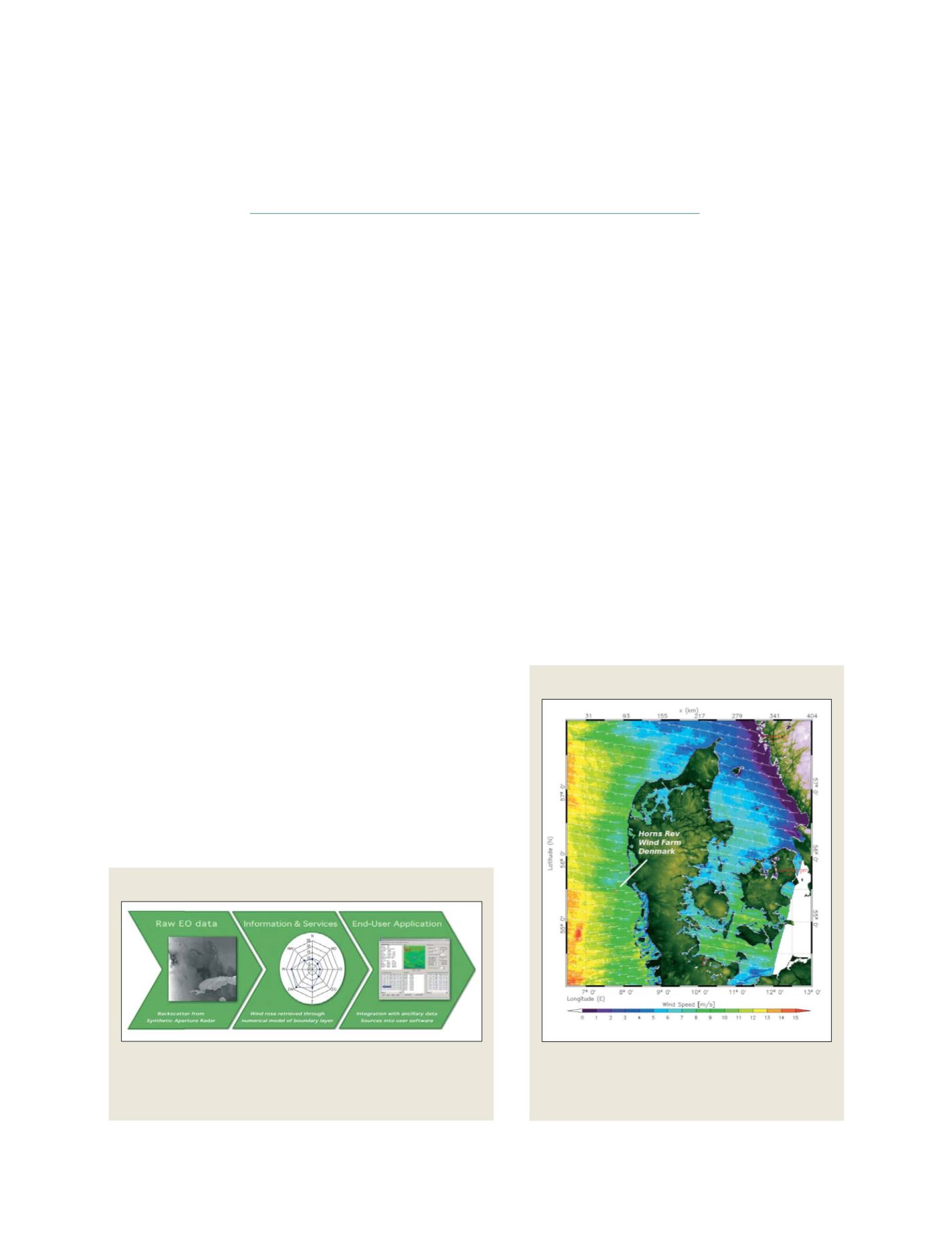

[
] 202
Winds of change from space
Pierre-Philippe Mathieu, European Space Agency, ESA/ESRIN;
Charlotte Hasager, RISOE National Laboratory DTU
W
ind energy is entering a golden age, with the fastest
growth across the whole renewable energy industry.
Recent regulations and policy targets related to climate
change are driving a booming demand for wind power. The
currently installed wind power capacity in Europe generates about
6 per cent of electricity consumption and is predicted to grow to
25 per cent by 2030, in particular via offshore production.
How can Earth Observation (EO) satellites orbiting several hundreds
of kilometres above the Earth help in the building and operating of
wind farms? The answer lies in the unique ability of EO satellites to
deliver global and repetitive measurements of the state of the atmos-
phere (eg meteorological conditions), ocean (eg coastal wind and
wave conditions) and land (eg topography, vegetation cover, terrain
roughness). With EO this is even possible in the most remote areas,
where no survey data exist, or else are impossible to obtain.
Such global data set can help energy managers and investors to
perform technical and financial feasibility studies of prospective sites
by quantifying factors determining the revenue (eg wind resources
available over the plant life-time) as well as the cost (eg environ-
mental impact, access to turbines for maintenance and connection
to the grid network for distribution).
In spite of their potential utility, the operational use of EO data
within the wind industry remains rather limited because of signifi-
cant cultural and awareness barriers, but also due to the need to turn
raw data into useable information. Recently, new Virtual Globes tech-
nologies, such as Google Earth and Virtual Earth, have significantly
contributed to raise awareness about the potential of EO.
However, more efforts are still needed to make the
most of the data. In this context, several demonstration
projects have been started in the framework of the Earth
Observation Market Development programme
(www.esa.int/eomd) of the European Space Agency
(ESA). Their aim is to foster the use of EO within busi-
ness practices of the renewable energy industry by
building partnerships between small value-adding
companies (specialized in EO data processing) and large
downstream companies requiring geo-information, such
as Tractebel, BMT, Shell, Vestas, and Airtricity.
Improved wind modelling
Accurate modelling of the wind flow is critical to quan-
tify wind resources at hub height. It also helps to improve
the accuracy of short-term forecast, leading to more effi-
Value chain of Earth observation data
Raw data is converted into useful information through pre-processing (retrieval
of geophysical data) and integration with other data sources. It is then
delivered into user-friendly geographic information systems and software used
within the renewable energy industry
Source: RISOE and ESA
Coastal wind measured from space
High-resolution wind field (mainly originating from South West)
around the Horns Rev wind farm, off the coast of Denmark.
Data derived from the ASAR instrument onboard the ENVISAT
satellite on the 14 November 2005
Source: BOOST Technologies and ESA
S
OCIETAL
B
ENEFIT
A
REAS
– E
NERGY
















